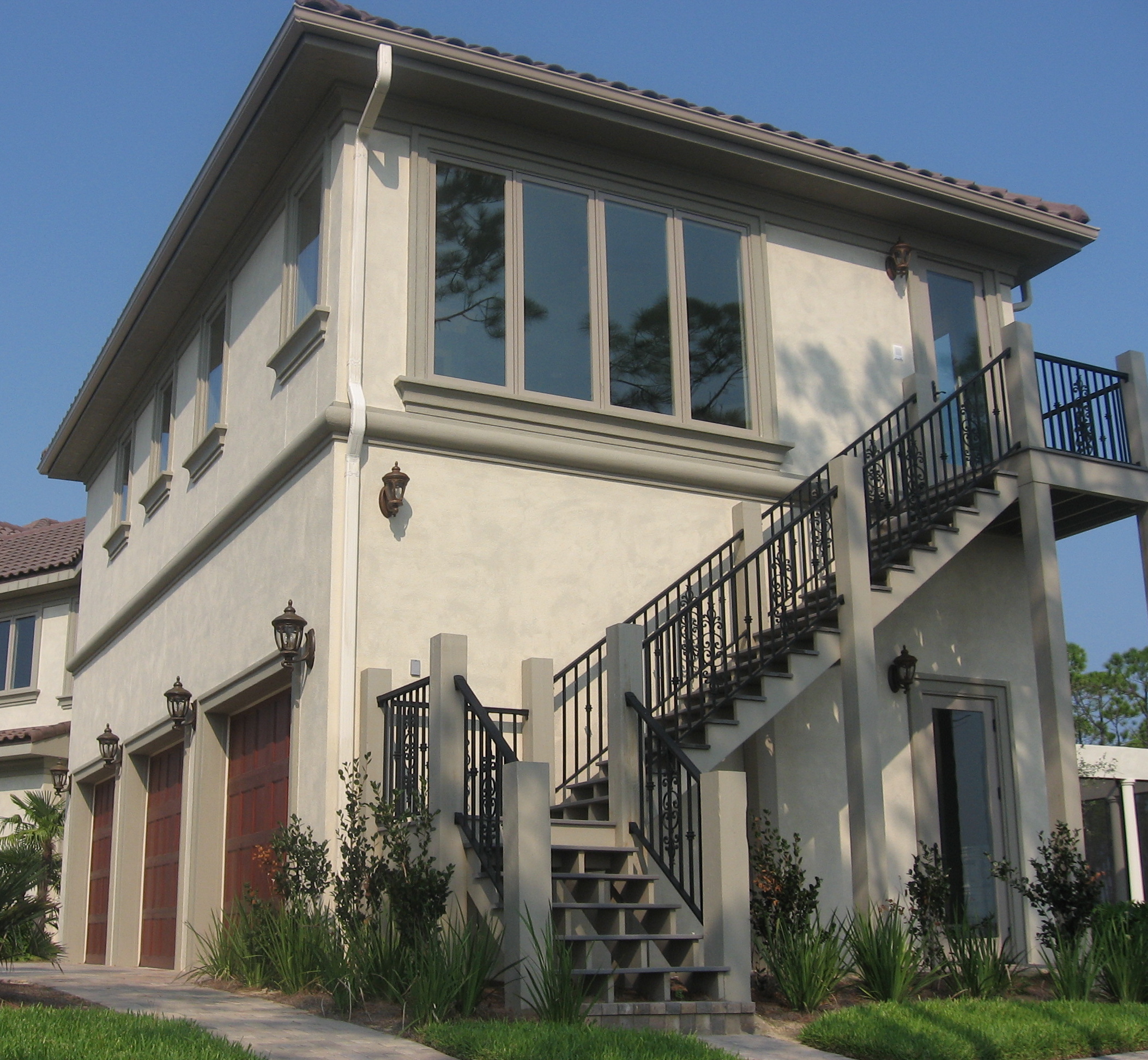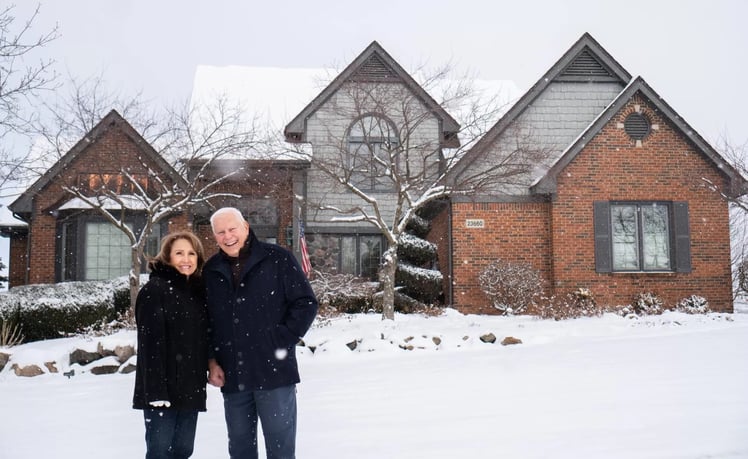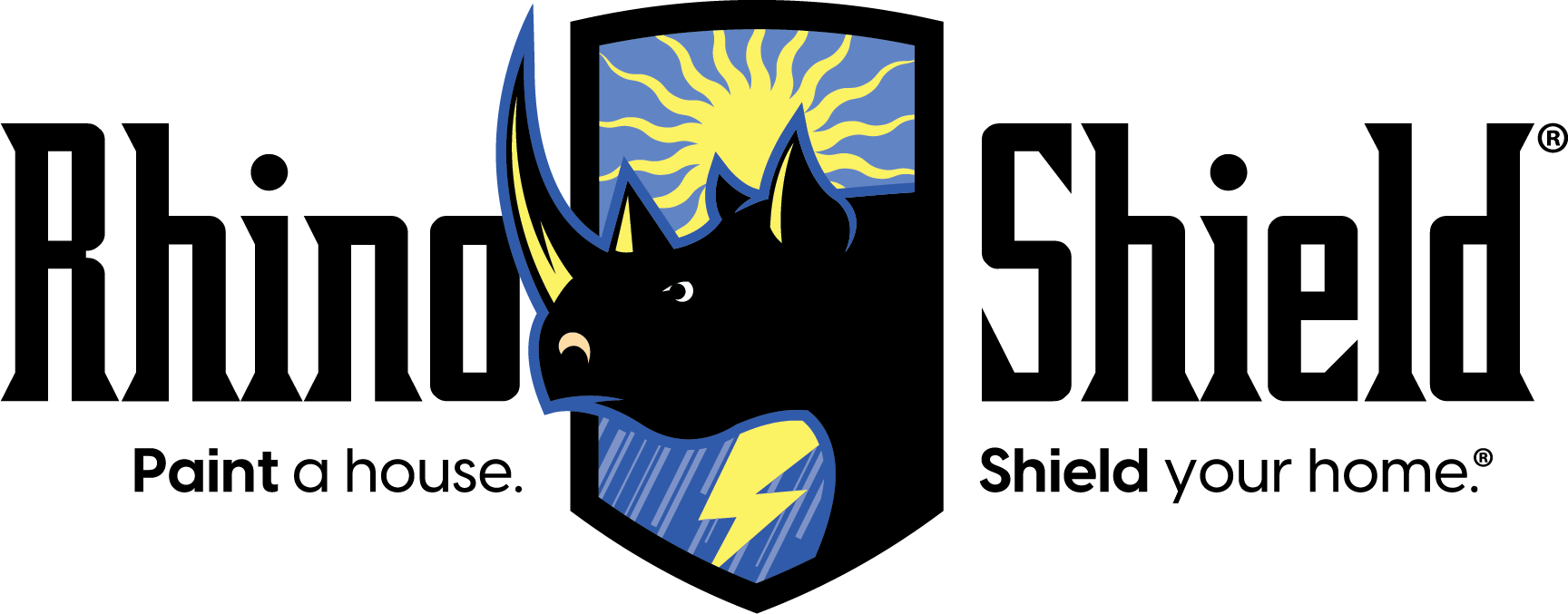Stucco vs. Brick: Which Offers Better Insulation for Exterior Walls?
February 20th, 2024 | 5 min. read
By admin


The increasing cost of household utilities over the past five years has prompted homeowners to seek energy-efficient solutions to reduce their expenses. Among these crucial considerations are the materials used in the construction of homes. This is particularly true for walls, as they take up the most surface area of your home’s exterior.
We at Rhino Shield paint tens of thousands of homes each year and have seen the market move more toward energy-efficient homes. Given this knowledge and the fact that stucco and brick are two common building materials, we are often asked questions like, “What is the energy efficiency of brick and/or stucco?”, “Which one is better?”, and “Is there a way to improve the energy-saving potential of these materials?”
We’ll answer all these questions, plus cover stucco and brick’s:
- Durability
- Longevity
- Insulation
- Heat conductivity
Rising Energy Costs
Average household utilities have gone up 40% in the last 5 years. More than ever before, homeowners are looking for any way to reduce their energy costs, and heating and cooling are huge contributors to a home’s energy consumption. It’s important to not only gauge materials for their durability and longevity but also their insulation and heat conductivity, as these factors can save you thousands of dollars over the years.
Insulation and Heat Conductivity
Both brick and stucco are renowned for their durability and longevity, yet their insulation capabilities leave room for improvement. While brick tends to be a better insulator than stucco, neither matches the natural insulation properties of wood. Wood's lower thermal conductivity makes it a superior choice for trapping heat.
For homeowners with brick or stucco homes, we at Rhino Shield recommend opting for a protective coating that not only provides insulation but also lowers thermal conductivity. This helps in maintaining optimal indoor temperatures, ultimately leading to significant energy savings.
While wood does have good insulation benefits, it falls short in terms of longevity compared to stucco and brick. The natural tendency of wood to rot over time poses a challenge, making it less durable in the long run. On the other hand, stucco and brick naturally last longer on their own and do not rot.
Additionally, brick and stucco are considerably cheaper than wood. These are the reasons why in recent years, stucco and brick homes are being built more than wood homes.
Brick vs Stucco Cost
Brick:
Over the years, manufacturers have modified brick veneer to suit various budgets, styles, and home designs. Below is the pricing of different brick types.
Solid brick veneer | $3 – $8
Faux brick strips| $4 – $10
Faux brick panels| $6 – $11
Thin brick strips| $5 – $15
Interlocking brick| $6 – $25
Information source: Average Cost Of Bricking A House In 2024: By Square Foot, Brick Type And More – Forbes Home
Keep in mind that these figures do not include labor. Labor will run you an additional $3 to $6 per square foot.
Stucco:
The price of stucco depends on which of the two types of stucco you decide to go with. Below are the pros, cons, and pricing of each.
Traditional Stucco Synthetic Stucco
$7 to $9 per square foot $7 and $12 per square foot
Better longevity Reduced susceptibility to cracking
Lower maintenance Superior insulation
More variety of textures Less diverse texture options
Limited color options Available in more colors
Information source: How Much Does It Cost to Stucco a House? [2024 Data] | Angi
Porosity and Water Absorption
One common characteristic of both brick and stucco is their porosity, making them prone to water absorption. This porous nature leads to the accumulation of bio growth, including:
- Algae
- Mold
- Fungi
Brick, when exposed to frequent moisture, may experience degradation of the mortar, necessitating early tuckpointing—an invasive and costly process. You can learn more about the maintenance of brick here.
Stucco, being even more porous than brick, presents greater challenges in managing water-related issues, such as cracking. In moisture-prone areas, it becomes crucial to apply a coating with water-resistant or water-repellent properties to protect both brick and stucco. While we recommend this for both materials, this precaution is particularly vital for stucco due to its higher porosity.
Our Rhino Shield exterior coating is a water-repellant paint. It can not only completely resist wind-driven rain that is equivalent to a category 2 hurricane, but it is also fully permeable as well. This means it allows moisture from inside your home to pass through it, preventing the space between your material and paint from trapping in water.
R-Value and Insulation Efficiency
The R-value quantifies a material's ability to hinder the transfer of heat from one side to another. Put simply, R-values gauge the efficiency of insulation, with a higher numerical value indicating more effective insulation. The R-value is a crucial factor in determining a material's insulation efficiency.
|
MATERIAL |
THICKNESS |
R-VALUE |
|
Common Brick |
1" |
0.20 |
|
Face Brick |
1" |
0.11 |
|
Traditional Stucco |
1” |
0.20 |
|
Synthetic Stucco |
1” |
4 |
Brick and stucco have similar R-values, but synthetic stucco has more insulation and a higher R-value than both. However, none of these are particularly insulative. While synthetic stucco is more expensive and more complicated to install, if you want to maximize energy efficiency, it might be a good choice.
Cost-Efficiency Through Protective Coatings
Painting stucco and brick is popular, and in very hot environments, sometimes necessary. If you are going to paint either, consider a coating that adds insulation. The insulation and heat reflectivity benefits of coatings like Rhino Shield contribute to substantial energy savings, especially for heat-prone and poor-insulating materials like stucco and brick.
Rhino Shield is not just paint, but a protective coating that boasts over 60% solids and is 8 – 10x thicker than traditional paints. This gives the material we coat over enhanced insulation. On top of that, Rhino Shield is UV reflective, meaning it reflects the sun’s rays and lowers the temperature of your walls. You can get more information on Rhino Shield’s energy-saving attributes here.
While factors like windows, air conditioning efficiency, and attic insulation also impact overall insulation, walls constitute the majority of the surface area affecting a home's insulation. Therefore, the upfront cost of a protective coating pays off through reduced energy costs over the years.
How Much Maintenance Does Brick and Stucco Need?
Both brick and stucco require maintenance to keep the material in pristine condition. However, even without any kind of coating, brick only needs its mortar replaced about every 25 years. On the other hand, stucco requires more checks and repairs over the years. Without any additional protection, you’ll need to repair the cracks that stucco is prone to accumulating.
Rhino Shield can protect and rejuvenate mortar through our specialized primer. Our brick primer seeps into the porous brick and bonds with it, creating a sealed barrier against mortar-damaging moisture. This will extend the lifespan of the mortar significantly.
Since stucco is prone to cracking, it’s important to use flexible paint that can move with a settling house to help alleviate the need to repair the cracks. Rhino Shield is elastomeric, a classification that means it is extremely flexible. There is a numerical standard of 100 that if a product hits, it can be labeled an elastomeric. Rhino Shield far exceeds this minimum value with a rating of 495.
Conclusion
In the stucco vs brick debate on energy efficiency, you should weigh factors such as insulation, durability, and water resistance to make an informed decision. The choice between the two should align with your specific needs and priorities, taking into account the climate and potential challenges both materials may face.
If you’re looking for a cheaper material but are willing to compromise on durability and maintenance, stucco is a great cost-effective option.
If you like the durability and maintenance-free benefits of brick and are willing to pay more for it, you may want to go with that.
Additionally, you should consider the aesthetic differences of both, as your preferred look will be a big factor in the decision-making process.
No matter which of the two you choose, investing in a protective coating proves to be a wise decision for both options. This ensures not only longevity but also substantial energy savings.
If you’re interested in our Rhino Shield home-exterior coating, scroll down for a no-obligation quote.

